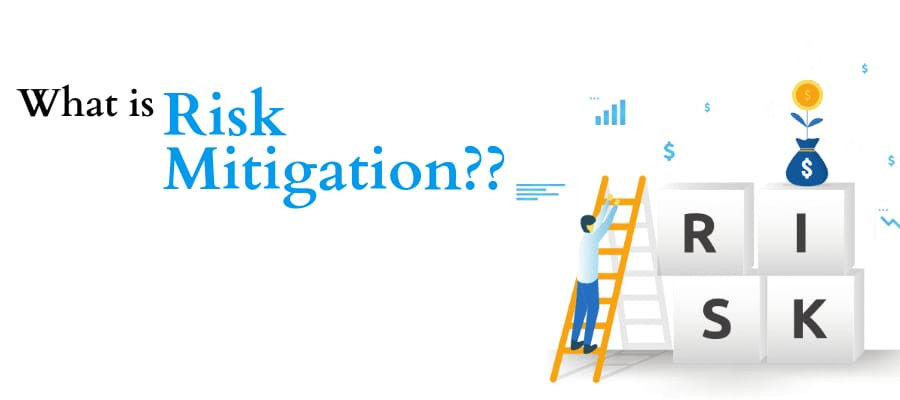What is Risk Mitigation? Types, Strategies, and Planning

Risk mitigation or Minimizing risk is essential to any successful business model. It involves developing a plan to manage, eliminate or at least limit any potential risks that may arise. After taking the necessary steps, monitoring progress and assessing the plan is essential to ensure it's doing its job. Risk management plans should be tailored to your business and its unique strategies. Taking a page from someone else's playbook may not always be the best option.
Creating a unique risk mitigation plan is essential for maintaining strong client relationships. After all, this plan helps you protect your business and ensure that you and your clients are satisfied with the result. So let's delve deeper into how this plan can benefit your business and help you avoid unnecessary risks.
Different types of risks
Here are some types:
1. Compliance Danger
No business wants its earnings or reputation to take a hit! Compliance regulations exist for a reason – to protect businesses from potential losses. When these regulations are ignored, companies put themselves at risk of losing customers or facing hefty fines. Don't let your business become a compliance danger. Instead, take the necessary steps to ensure compliance and avoid costly consequences.
2. Legal danger
Legal danger can be a very costly and stressful experience for businesses. Violations of laws and regulations can lead to costly litigation, fines, and possibly even jail time for the company's executives. Therefore, companies must be aware of their responsibilities to comply with the ever-changing legal landscape to avoid expensive and time-consuming legal battles. Taking proactive steps and staying informed of current laws and regulations can help businesses avoid costly litigation and maintain compliance.
3. Strategic Hazard
Strategic hazards can arise when businesses make decisions without fully understanding their risks. Therefore, companies should take the necessary steps to understand the risks involved with their decisions and take the steps needed to ensure that they are making the right decisions for the long-term health of the business.
4. Continuity Risk
The company's image or standing in the eyes of the public might be harmed if the risk comes to pass. There is a link between reputational risks and financial losses, as well as a decline in shareholder confidence.
5. Operational Hazard
Operational hazards might compromise profitability. Internal and external factors can hurt a company's bottom line. If the corporation wants to keep its earnings intact, its risk managers must remain attentive.
Planning
1. Include risk management in your projects
Risk management should be an integral part of any project. It should be considered during the initial planning stages and revisited throughout the project lifecycle. A comprehensive risk management plan should be developed that considers the potential risks associated with the project, how they can be mitigated, and who is responsible for each step.
2. Share Risks with Others
Sharing the risks associated with a project with other stakeholders can be beneficial. This can help to ensure that everyone is aware of any potential risks and can help to ensure that all parties are taking the necessary steps to minimize them.
3. Prioritize Risks
Once the risks have been identified, it's important to prioritize them based on their potential impact on the project. This will help ensure that the most critical risks are addressed first and that any minor risks can be addressed later.
4. Consider Risks
When considering risks, it's essential to consider both the potential positive and negative impacts they could have on the project. It's also important to consider the likelihood of each risk occurring and its possible cost.
5. Implement Risk Mitigation Measures
Once the risks have been identified, it's important to take the necessary steps to mitigate them. This could involve implementing specific protocols, procedures, or policies or allocating additional resources to the project.
6. Follow up Frequently
It's essential to keep track of any risks that have been identified and to follow up frequently to ensure that they are being addressed properly. This will help ensure that the project remains on track and minimize the risk of any potential issues.
Strategies
1. Risk Avoidance
Risk avoidance is a strategy that involves avoiding any risks that may arise. This strategy is often used when the potential losses associated with risk are too great. For example, a company may choose to avoid entering into a certain market if the potential losses outweigh the potential gains.
2. Risk Transfer
This could involve purchasing insurance or entering into a contract that transfers the risk to another entity.
3. Risk Acceptance or Retention
Acceptance of risk, also known as retention, is a risk management method that entails doing what can be done to reduce the likelihood and impact of negative outcomes. For example, it might mean doing anything to lessen the likelihood of a loss or putting money away in case of a specific loss.
4. Risk Monitoring
It involves regularly assessing the risks associated with a project and taking the necessary steps to ensure they are being addressed properly. This can help ensure that potential risks are identified and addressed promptly.
In conclusion, it is clear that effective Risk Management is crucial to any viable company strategy. Making a strategy to control, eliminate, or reduce the probability of a negative outcome.
Reference
- https://monday.com/blog/project-management/risk-mitigation/



